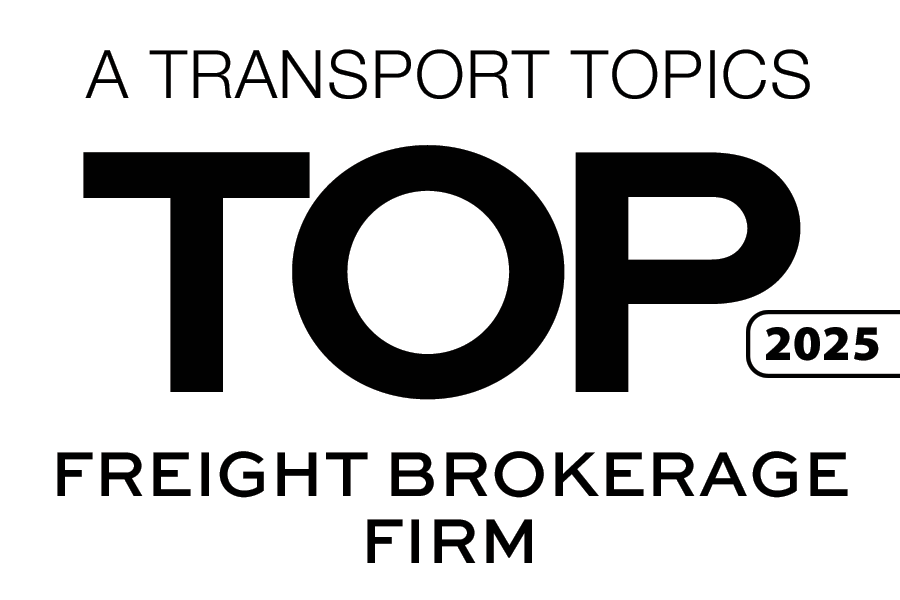Leading Forecaster Offers Predictions on the Shifting Freight Market
July 23, 2024
 The freight industry is in a constant state of flux, requiring keen insights and accurate predictions to navigate effectively. During a recent episode of the Stay In Your Lane Podcast recorded live at FSA ’24, Eric Starks, Chairman of FTR Transportation Intelligence, shared his perspectives on the current and future state of the market. With expertise honed from years of forecasting equipment demand and market analysis, Starks offers valuable lessons for professionals across the freight industry.
The freight industry is in a constant state of flux, requiring keen insights and accurate predictions to navigate effectively. During a recent episode of the Stay In Your Lane Podcast recorded live at FSA ’24, Eric Starks, Chairman of FTR Transportation Intelligence, shared his perspectives on the current and future state of the market. With expertise honed from years of forecasting equipment demand and market analysis, Starks offers valuable lessons for professionals across the freight industry.
Starks began his career focusing on equipment demand before delving into broader market trends under the mentorship of Ed Graham, FTR’s founder. His passion lies in the intersection of storytelling and market analysis, helping clients understand market dynamics and make informed decisions.
“I very much enjoy the big picture and trying to help people understand that story, being able to tell that story,” he Starks. “Because it’s storytelling as well as data analysis and trying to understand what the markets are doing.”
Accurately predicting market trends is notoriously difficult. Starks humorously claims his predictions are “always fantastic, 100% without fail,” acknowledging the inherent unpredictability. The goal, he emphasizes, is not to be right all the time but to provide information that helps clients plan and conduct risk analysis effectively. Economic data revisions are common, but each revision offers a clearer understanding of past events, aiding better future decision-making.
What do key economic indicators such as GDP indicate about the future of the freight market? Watch the latest episode of the Stay In Your Lane Podcast for timely insights on this topic and more.
“It is really difficult to forecast these markets,” Starks says. “We try to tell our customers that it’s not about being 100% right; it’s about being able to plan, to be able to do risk analysis, to be able to put thought around things to quantify as best as you can.”
As of now, the freight market is relatively stable. There is excess capacity, but not at alarming levels. Rates are stabilizing, and the economy is humming along. However, there is a noticeable disconnect between services and goods, with the goods market flattening out while consumer demand remains strong.
For shippers, the key concerns are future capacity and cost. Starks predicts a tightening in capacity towards the latter part of the year, with significant impacts not felt until 2025. This period represents a traditional “soft landing” in economic terms, with GDP remaining robust and no significant drop in freight volumes.
Contrary to some beliefs, Starks argues that the current economic scenario isn’t a traditional recession. GDP hasn’t fallen, and freight volumes haven’t significantly dropped. Instead, there’s been a “recession in rates” and a normalization of market conditions.
 “We would have thought that more capacity would have come out of the system by now than it has. If the capacity hasn’t come out, then usually that means that there’s some type of demand there,” he explains. “That’s why when we look at the market, when we say that we haven’t seen a freight recession, it’s basically flattened out.”
“We would have thought that more capacity would have come out of the system by now than it has. If the capacity hasn’t come out, then usually that means that there’s some type of demand there,” he explains. “That’s why when we look at the market, when we say that we haven’t seen a freight recession, it’s basically flattened out.”
Starks and his team expected more capacity to leave the market by now. The slower-than-expected exit of capacity indicates ongoing demand. Interestingly, while some small fleets and owner-operators have exited, larger fleets remain stable, suggesting a shift rather than a decline in capacity.
During the pandemic, the industry saw a surge in trailer additions, with large fleets purchasing more trailers per tractor than ever before. This trend might continue, as it allows fleets to adapt better to consumer demands and improve driver productivity, even if it means having more idle equipment.
For now, the industry doesn’t face a driver shortage in the traditional sense. Shippers can find drivers to move freight as needed. However, there are long-term structural issues due to an aging driver population and insufficient recruitment of younger drivers. This challenge isn’t unique to trucking but affects various industries, including construction.
The focus has shifted to making drivers more productive, even if it means having idle equipment. This approach ensures that drivers can maximize their work hours, maintaining industry efficiency.
Starks’ insights highlight the complexity of the freight market. While challenges persist, understanding market trends, capacity dynamics, and driver productivity can help freight professionals navigate the industry more effectively. By focusing on informed decision-making rather than perfect predictions, companies can better prepare for future fluctuations and maintain stability in an ever-evolving market.
At Triple T Transport, we stay informed on the latest market trends and insights to provide our clients with the best possible service. Contact us today to learn how we can help you navigate the complexities of the freight industry.














